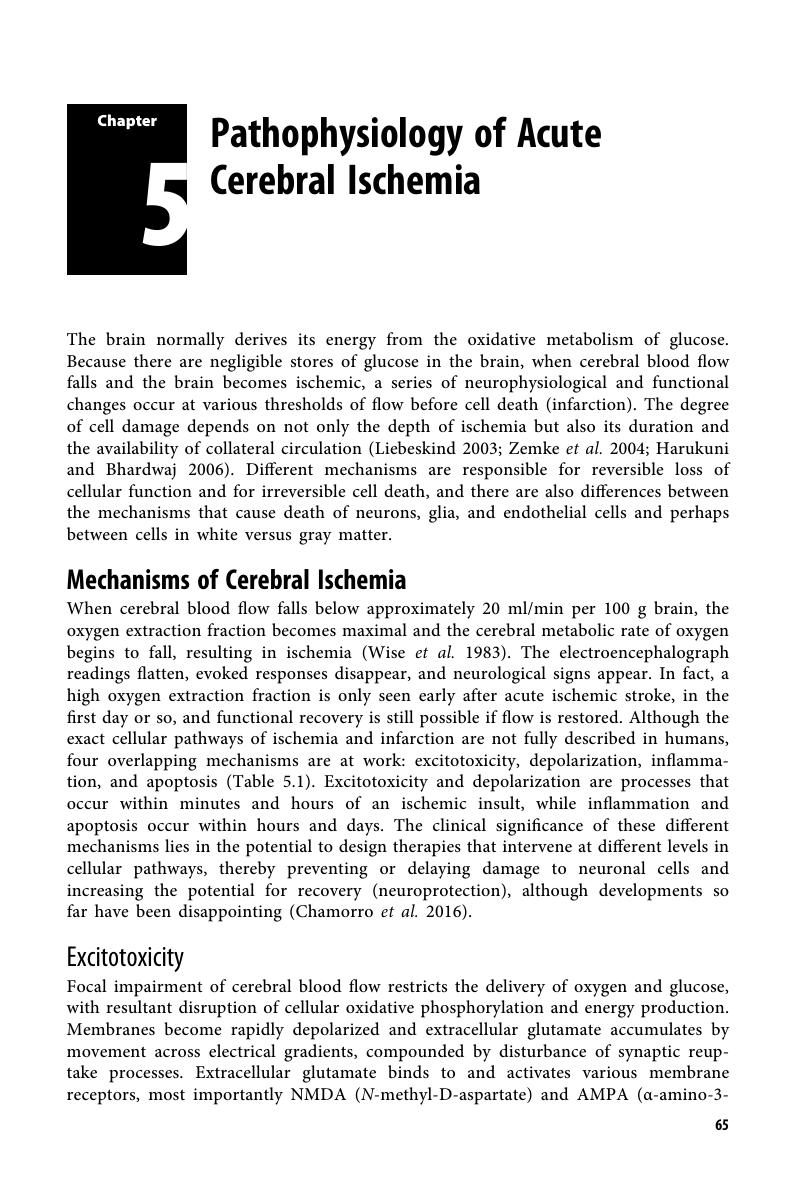Book contents
- Transient Ischemic Attack and Stroke
- Transient Ischemic Attack and Stroke
- Copyright page
- Contents
- Preface to the Second Edition
- Section 1 Epidemiology, Risk Factors, Pathophysiology, and Causes of Transient Ischemic Attacks and Stroke
- Chapter 1 Epidemiology
- Chapter 2 Risk Factors
- Chapter 3 Genetics
- Chapter 4 Anatomy and Physiology
- Chapter 5 Pathophysiology of Acute Cerebral Ischemia
- Chapter 6 Causes of Transient Ischemic Attack and Ischemic Stroke
- Chapter 7 Causes of Spontaneous Intracranial Hemorrhage
- Section 2 Clinical Features, Diagnosis, and Investigation
- Section 3 Prognosis of Transient Ischemic Attack and Stroke
- Section 4 Treatment of Transient Ischemic Attack and Stroke
- Section 5 Secondary Prevention
- Section 6 Miscellaneous Disorders
- Index
- References
Chapter 5 - Pathophysiology of Acute Cerebral Ischemia
from Section 1 - Epidemiology, Risk Factors, Pathophysiology, and Causes of Transient Ischemic Attacks and Stroke
Published online by Cambridge University Press: 01 August 2018
- Transient Ischemic Attack and Stroke
- Transient Ischemic Attack and Stroke
- Copyright page
- Contents
- Preface to the Second Edition
- Section 1 Epidemiology, Risk Factors, Pathophysiology, and Causes of Transient Ischemic Attacks and Stroke
- Chapter 1 Epidemiology
- Chapter 2 Risk Factors
- Chapter 3 Genetics
- Chapter 4 Anatomy and Physiology
- Chapter 5 Pathophysiology of Acute Cerebral Ischemia
- Chapter 6 Causes of Transient Ischemic Attack and Ischemic Stroke
- Chapter 7 Causes of Spontaneous Intracranial Hemorrhage
- Section 2 Clinical Features, Diagnosis, and Investigation
- Section 3 Prognosis of Transient Ischemic Attack and Stroke
- Section 4 Treatment of Transient Ischemic Attack and Stroke
- Section 5 Secondary Prevention
- Section 6 Miscellaneous Disorders
- Index
- References
Summary

- Type
- Chapter
- Information
- Transient Ischemic Attack and StrokeDiagnosis, Investigation and Treatment, pp. 65 - 70Publisher: Cambridge University PressPrint publication year: 2018
References
- 1
- Cited by



